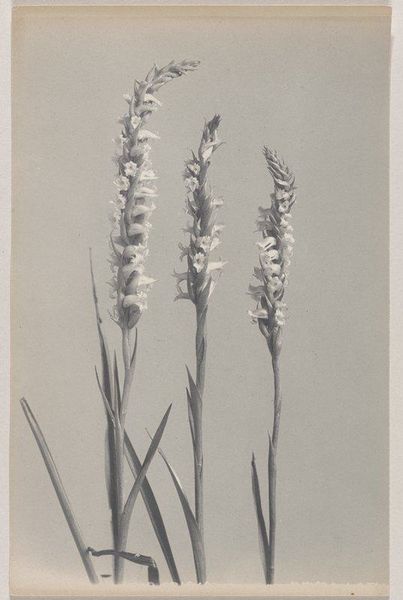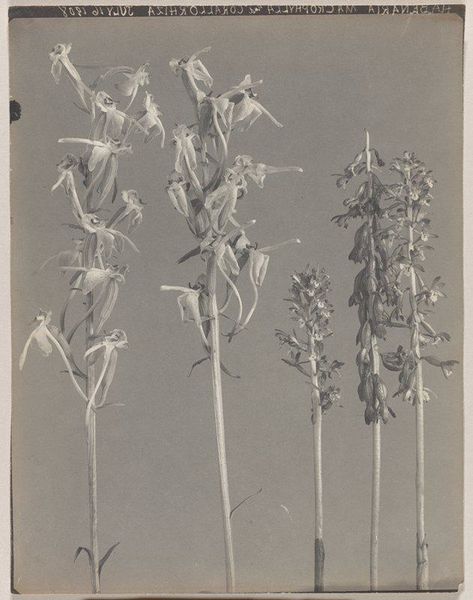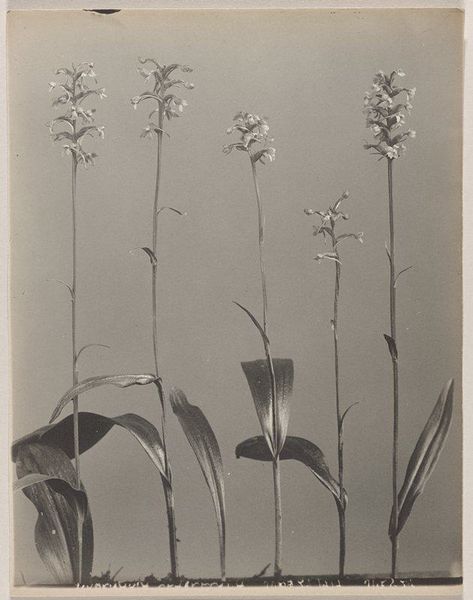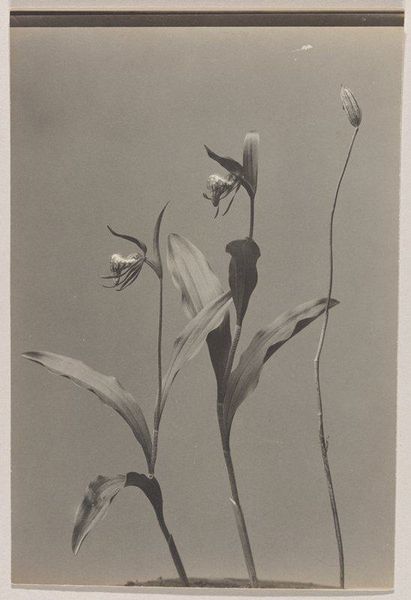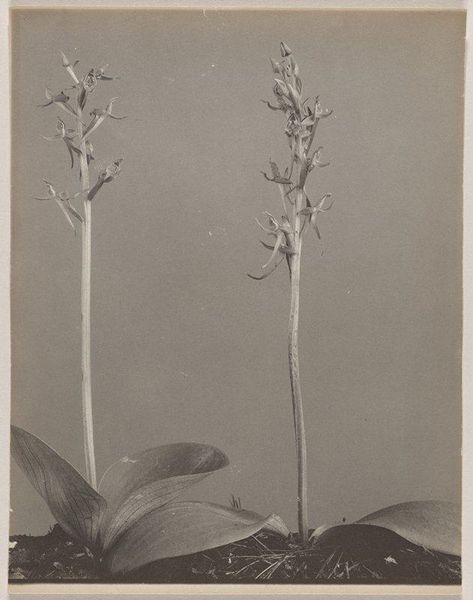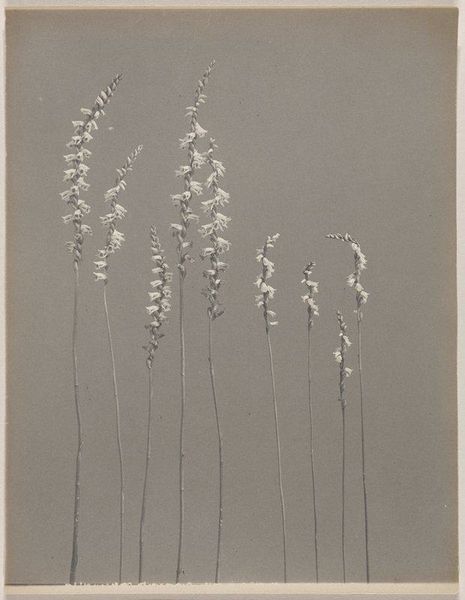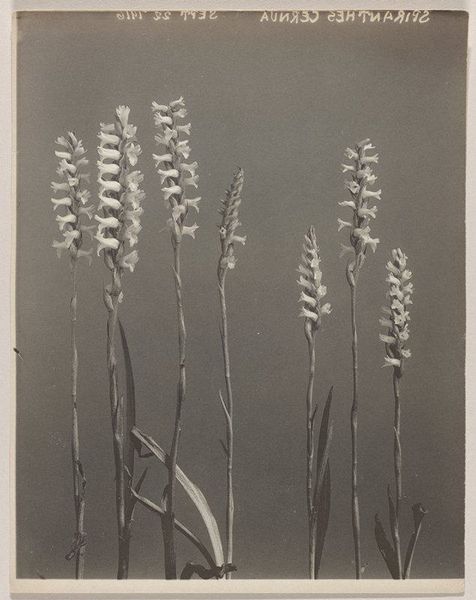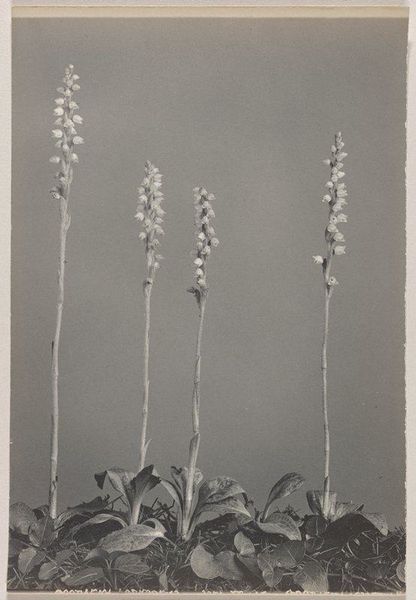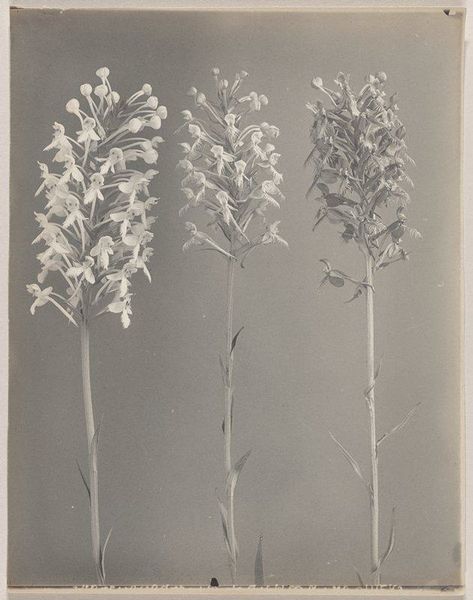
photography
#
still-life-photography
#
photography
#
united-states
#
botanical art
#
watercolor
#
realism
Dimensions: 9 3/4 x 7 3/4 in. (24.77 x 19.69 cm) (image)9 7/8 x 7 7/8 in. (25.08 x 20 cm) (sheet)
Copyright: No Copyright - United States
Curator: Let’s turn our attention to Edwin Hale Lincoln’s 1931 photograph, "Spiranthes odorata – Fragrant Ladies' Tresses," currently held in the Minneapolis Institute of Art. Editor: There’s an immediate sense of stark simplicity, almost austerity to this monochrome still life. The flowers and grasses are isolated, carefully arranged, demanding close attention to detail. Curator: Indeed. Lincoln, during this period, was part of a movement that saw photography as a scientific tool as much as an artistic one. This approach to botanical photography saw a resurgence linked to conservation efforts. Editor: I find it interesting how he directs us to focus on texture, and on form achieved through a photographic medium. What was often perceived as strictly for documenting shifts to something deliberately crafted. Do we know anything about the printing process? Curator: Archival records point to the use of platinum printing, a process admired for its tonal range and permanence. Lincoln also achieved notoriety as a maker of high-end furniture. Editor: That blend of disciplines—scientific accuracy rendered with an eye for enduring form, the careful labor required of the print matched with that of furniture making—invites contemplation about art’s role. Here is photography treated as if a material to build an aesthetic around the orchid. Curator: He certainly had a meticulous eye. And considering photography's accessibility at the time, I think it speaks volumes that such care was invested in documenting what was increasingly disappearing because of the rampant habitat loss and rapid industrialization in the United States during that time. Editor: Perhaps, in these delicate flowers frozen in a moment, we're asked to reconsider what labor, materials, and even art can offer during precarious environmental shifts. Curator: Yes, absolutely. Lincoln’s work stands as a powerful testament to a historical moment of shifting perspectives on photography and nature's worth, and maybe its role in social discourse.
Comments
No comments
Be the first to comment and join the conversation on the ultimate creative platform.

